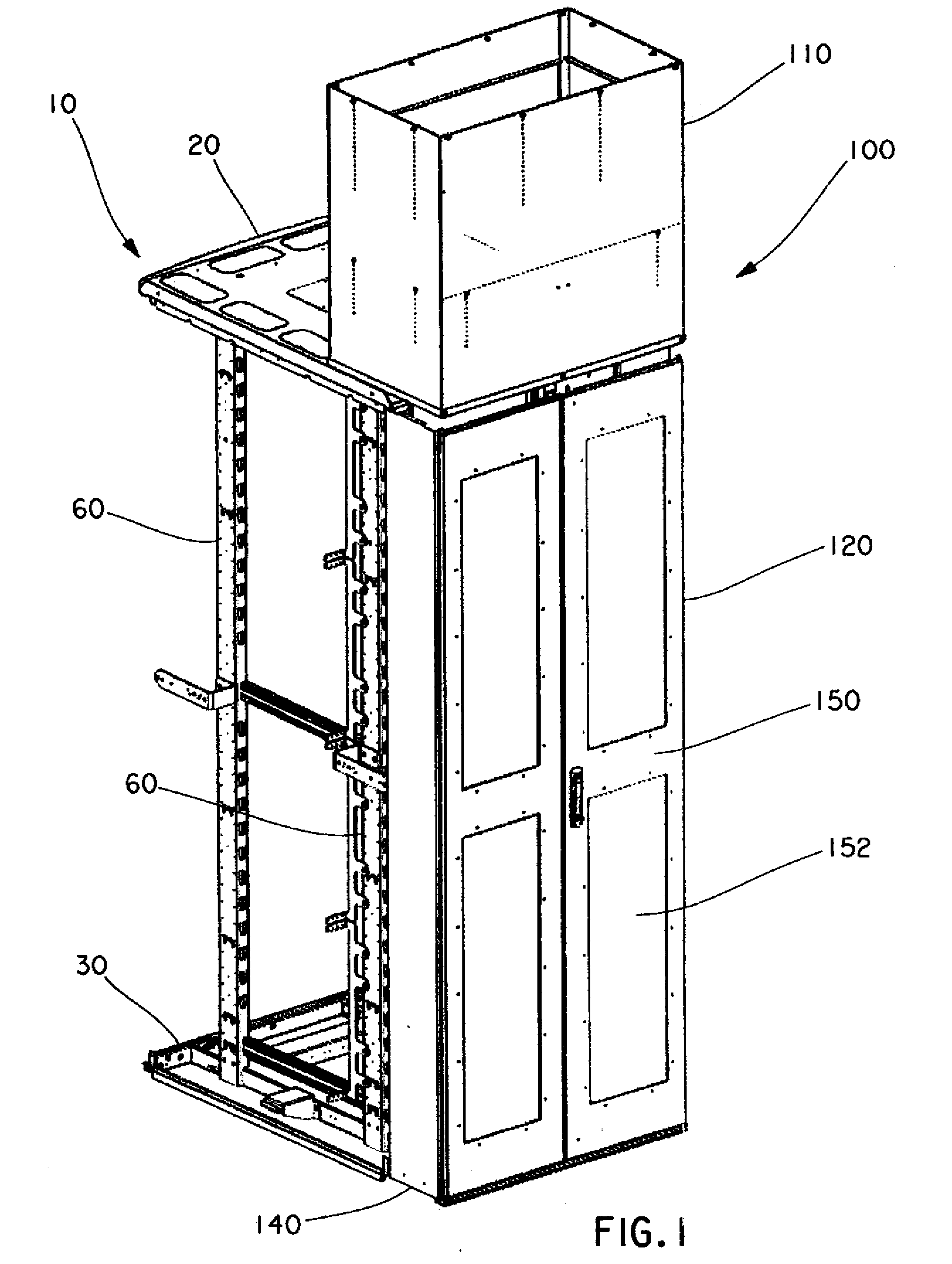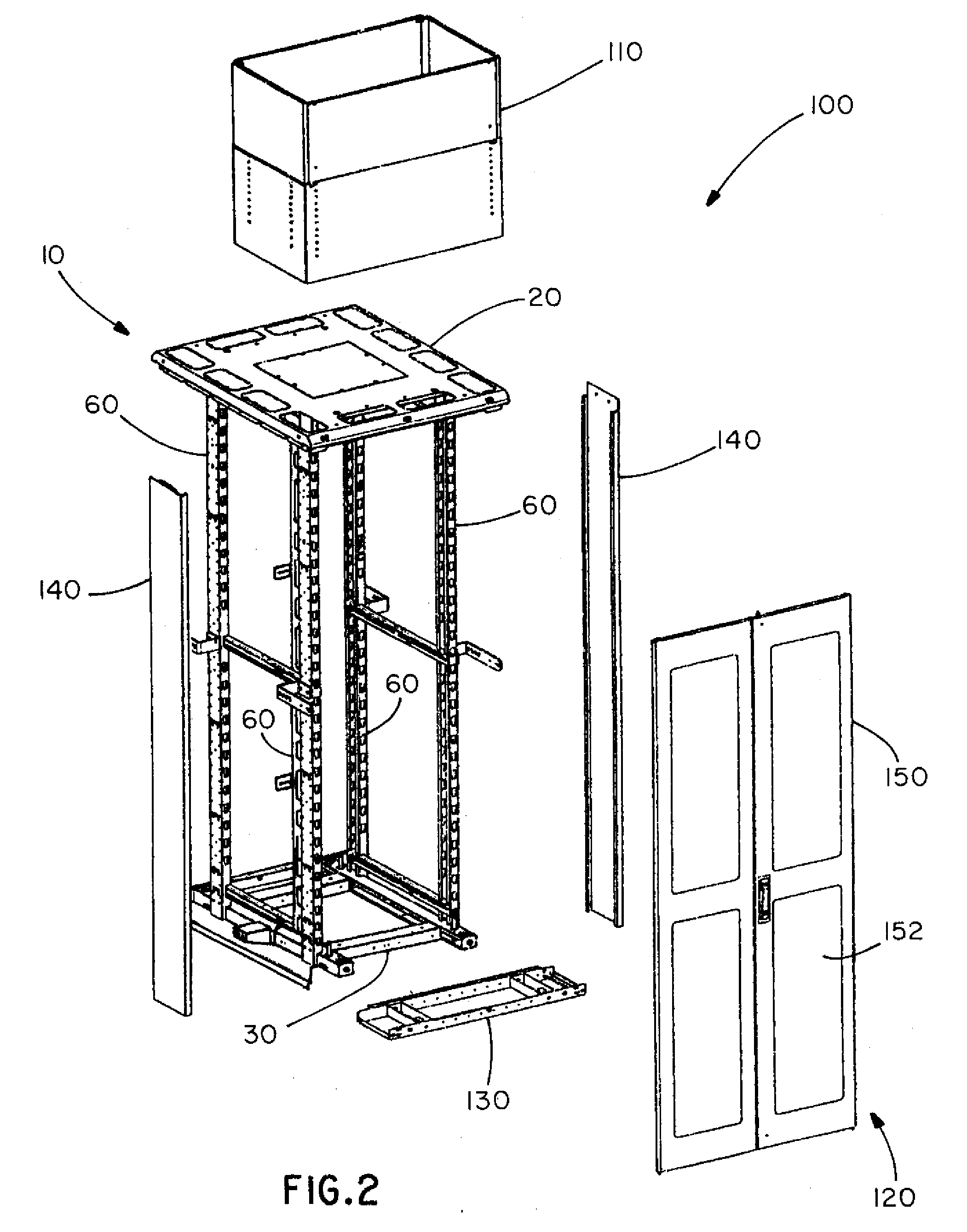Passive Cooling Systems for Network Cabinet
a passive cooling and network cabinet technology, applied in ventilation systems, heating types, electrical apparatus casings/cabinets/drawers, etc., can solve the problems of difficult installation of passive cooling systems in existing network cabinets, less expensive, and require more space than a comparable active cooling system, and achieves easy installation and easy sharing.
- Summary
- Abstract
- Description
- Claims
- Application Information
AI Technical Summary
Benefits of technology
Problems solved by technology
Method used
Image
Examples
Embodiment Construction
[0042]FIGS. 1-10 illustrate a passive cooling system 100 for a network cabinet 10, such as the PANDUIT® NET-ACCESS™ Cabinets, according to several embodiments of the present invention.
[0043]As best seen in FIG. 1, the passive cooling system 100 includes a chimney 110 and a cabinet extension 120. The chimney 110 is positioned above the cabinet extension 120, and overlaps a portion of the network cabinet 10.
[0044]As best seen in FIG. 2, the cabinet extension 120 includes a base 130, two side panels 140, and a back door 150. The cabinet extension 120 is positioned behind the network cabinet 10, and expands the volume of the network cabinet 10. The cabinet extension 120 and a portion of the network cabinet 10 that is adjacent to the cabinet extension 120 define an exhaust plenum 160 for the passive cooling system 100, as best seen in FIG. 7. Although the back door 150 is described with reference to the cabinet extension 120, it is understood that the back door 150 may be the back door 1...
PUM
 Login to View More
Login to View More Abstract
Description
Claims
Application Information
 Login to View More
Login to View More - R&D
- Intellectual Property
- Life Sciences
- Materials
- Tech Scout
- Unparalleled Data Quality
- Higher Quality Content
- 60% Fewer Hallucinations
Browse by: Latest US Patents, China's latest patents, Technical Efficacy Thesaurus, Application Domain, Technology Topic, Popular Technical Reports.
© 2025 PatSnap. All rights reserved.Legal|Privacy policy|Modern Slavery Act Transparency Statement|Sitemap|About US| Contact US: help@patsnap.com



